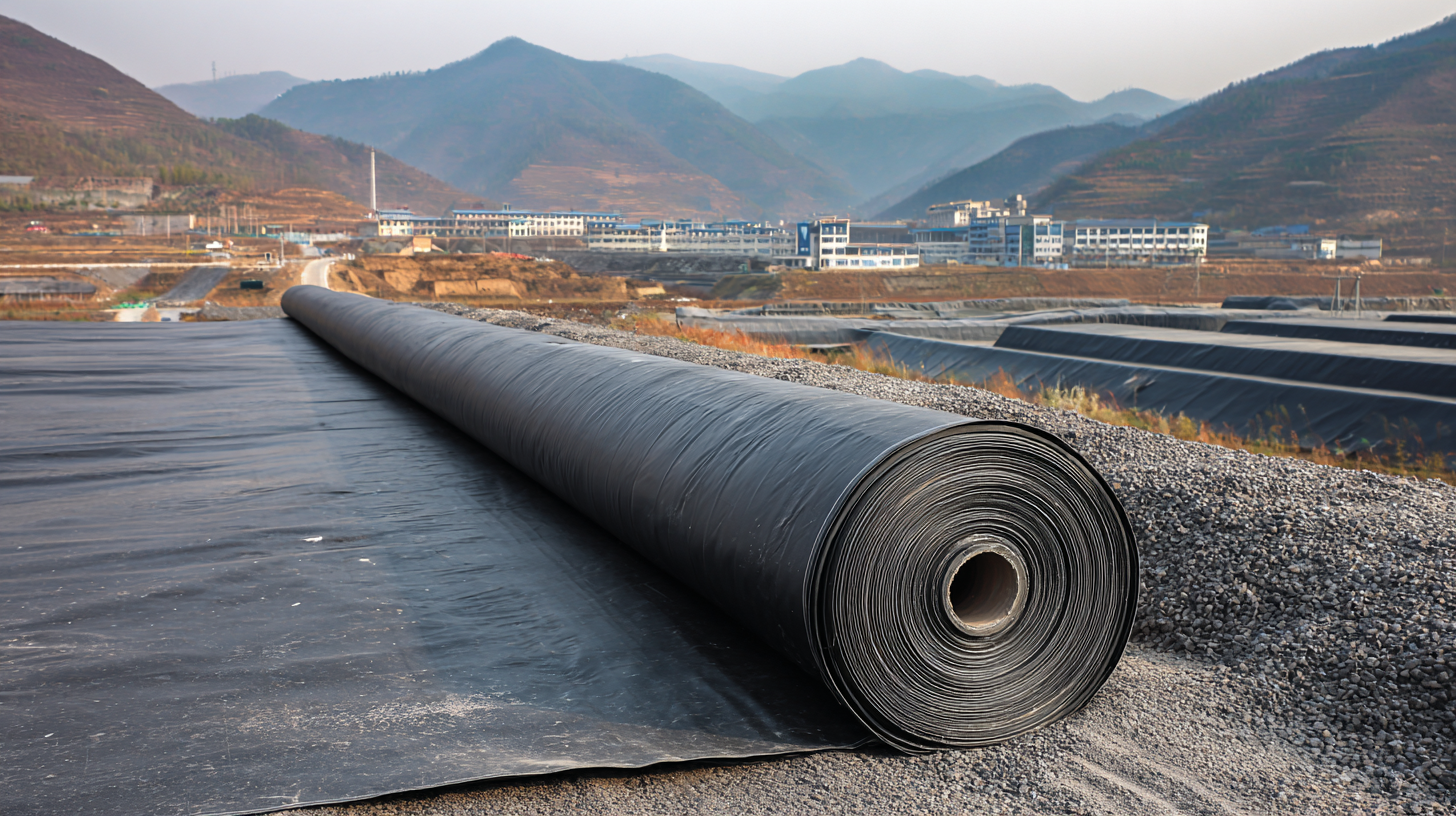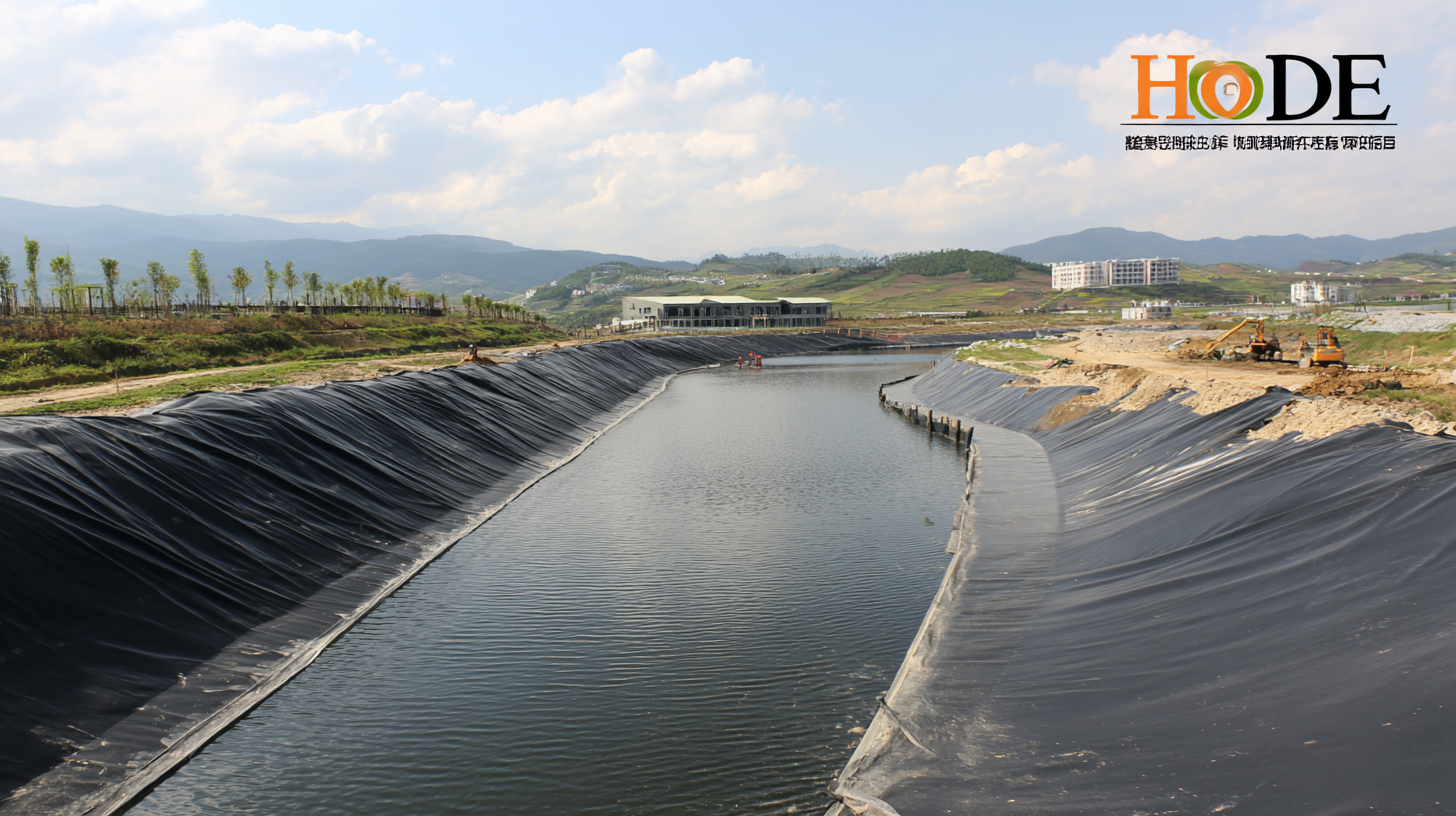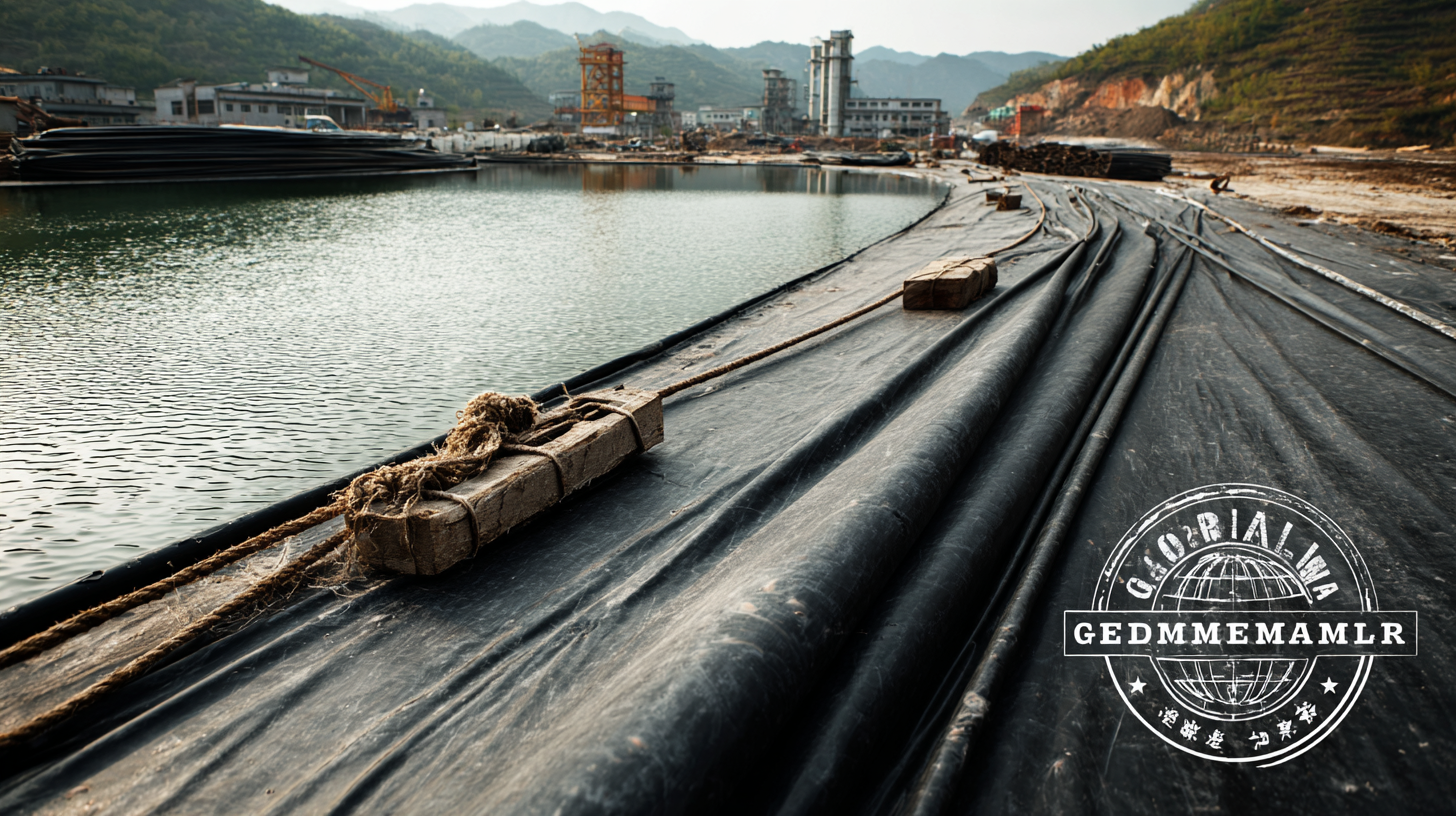Inquiry
Form loading...
- Phone
- E-mail
The global demand for high-quality construction materials has surged, significantly accelerating the adoption of innovative products such as HDPE geomembranes. According to a report by Research and Markets, the global geomembrane market is projected to reach $3.67 billion by 2027, driven by the growing need for sustainable and effective pollution control solutions in industries ranging from waste management to mining.
 HDPE geomembranes, known for their exceptional durability and resistance to chemical and environmental factors, present a compelling choice for engineers and project managers worldwide. As global buyers increasingly recognize the advantages of choosing Chinese manufacturers, who offer cutting-edge production techniques and quality assurance, the quality revolution of HDPE geomembranes is becoming a key focus in construction and environmental protection sectors.
This blog will explore why these products are not only meeting but exceeding international standards, positioning them as a cornerstone of future infrastructure development.
HDPE geomembranes, known for their exceptional durability and resistance to chemical and environmental factors, present a compelling choice for engineers and project managers worldwide. As global buyers increasingly recognize the advantages of choosing Chinese manufacturers, who offer cutting-edge production techniques and quality assurance, the quality revolution of HDPE geomembranes is becoming a key focus in construction and environmental protection sectors.
This blog will explore why these products are not only meeting but exceeding international standards, positioning them as a cornerstone of future infrastructure development.
HDPE geomembranes have become a crucial element in modern construction and environmental projects, offering unparalleled durability and efficiency. These high-density polyethylene liners are utilized in various applications, including landfills, reservoirs, and mining operations, where they provide effective barriers against liquids and gases. Their resistance to UV radiation, chemicals, and physical stress makes them an ideal choice for projects that require long-term integrity and environmental protection.
When selecting HDPE geomembranes, buyers should consider several important tips. First, ensure that the material meets industry standards for quality and performance. Look for products with appropriate certifications to guarantee their reliability. Second, think about the installation process; proper installation is vital for maximizing the geomembrane's lifespan and effectiveness. Engage professionals who are experienced in handling HDPE materials to avoid common pitfalls during installation.
Additionally, assessing the specific environmental conditions of your project site can help determine the correct thickness and properties of the geomembrane needed. Conduct thorough site evaluations to understand the potential challenges, such as soil erosivity and chemical exposure, which will influence the performance of the geomembrane. By prioritizing these factors, global buyers can optimize the benefits of quality HDPE geomembranes in their projects.
This chart illustrates the increasing global usage of HDPE geomembranes in various sectors from 2018 to 2023. The data indicates a rising trend in applications, reflecting the growing importance of quality geomembranes in modern construction and environmental projects.
The quality revolution in Chinese-made HDPE geomembranes is underpinned by key characteristics that set high-quality products apart in the market. Firstly, the inclusion of carbon black in HDPE geomembranes is crucial. It provides essential UV protection, thereby mitigating polymer degradation and enhancing overall lifespan. The balance of this additive remains vital, as excess can lead to performance issues, underscoring the importance of precision in manufacturing processes.
Additionally, advancements in material technology, such as the introduction of innovative bimodal HDPE resins, are pushing the boundaries of geomembrane performance. These resins not only improve chemical resistance but also enhance durability, making them an excellent choice for hazardous waste landfills, where the integrity of containment solutions is paramount. As the geomembrane market continues to evolve, the focus on these critical characteristics will help global buyers to identify and invest in solutions that meet their operational needs effectively.

As global buyers increasingly seek high-quality solutions, the evaluation of manufacturer certifications and industry standards for HDPE geomembranes becomes paramount. The International Geosynthetics Society emphasizes that compliance with ASTM D4595 and GRI GM13 standards is essential for ensuring the performance and durability of geomembranes in various applications. These certifications guarantee that the materials meet rigorous testing criteria, which assess factors like tensile strength, elongation, and permeability.
Recent market analyses, like those conducted by MarketsandMarkets, indicate that the geomembrane market is projected to reach $3.5 billion by 2025, with HDPE geomembranes holding a significant share due to their robust properties and versatility. With a growing demand for waste management and water conservation solutions, manufacturers must adhere to internationally recognized standards, which not only enhance product quality but also build trust among buyers. Investing in properly certified geomembranes can significantly reduce long-term operational costs and environmental impact, making it a crucial consideration for stakeholders in various sectors.
As global awareness of environmental sustainability intensifies, the demand for high-density polyethylene (HDPE) geomembranes is expected to see significant growth by 2030. This surge is driven by various factors, including the increasing need for effective waste management solutions, enhanced agricultural practices, and the rise in construction activities requiring reliable waterproofing solutions. Market analysis indicates that the overall demand for HDPE geomembranes will not only be influenced by industrial applications but also by new advancements in manufacturing processes and materials technology.
The quality revolution of Chinese-made HDPE geomembranes is a key player in this market expansion. Chinese manufacturers are increasingly recognized for their commitment to quality and innovation. With investments in advanced production techniques and rigorous quality control measures, these companies are matching or even exceeding international standards. As global buyers discover the exceptional performance and durability of Chinese HDPE geomembranes, it becomes evident that they are well-positioned to cater to the rising demand in various sectors, ensuring a brighter future for both manufacturers and clients alike.
| Region | 2023 Demand (in million sq. m) | 2030 Projected Demand (in million sq. m) | CAGR (%) |
|---|---|---|---|
| Asia-Pacific | 250 | 420 | 7.5 |
| North America | 180 | 300 | 7.2 |
| Europe | 150 | 250 | 7.0 |
| Latin America | 100 | 180 | 8.0 |
| Middle East & Africa | 80 | 150 | 9.0 |
When evaluating suppliers of HDPE geomembranes in China, it is essential to adopt best practices that ensure reliability and quality. According to a report by MarketsandMarkets, the global geomembrane market is projected to reach $4.3 billion by 2025, emphasizing the increasing demand for high-quality products. Buyers should prioritize suppliers who demonstrate compliance with international quality standards, such as ISO 9001 and ASTM D7169, which certify that the manufacturer can consistently produce products that meet customer and regulatory requirements.
In addition to certifications, assessing a supplier's reputation through third-party reviews and industry benchmarks can provide insights into their reliability. A recent study published in the Journal of Geotechnical Engineering found that geomembranes manufactured with advanced technological processes are less likely to develop defects, which significantly affects their performance and longevity. Engaging in comprehensive supplier audits and requesting samples for independent testing can further mitigate risks, ensuring that the chosen HDPE geomembrane meets the specified performance criteria and withstands the rigors of environmental challenges.

